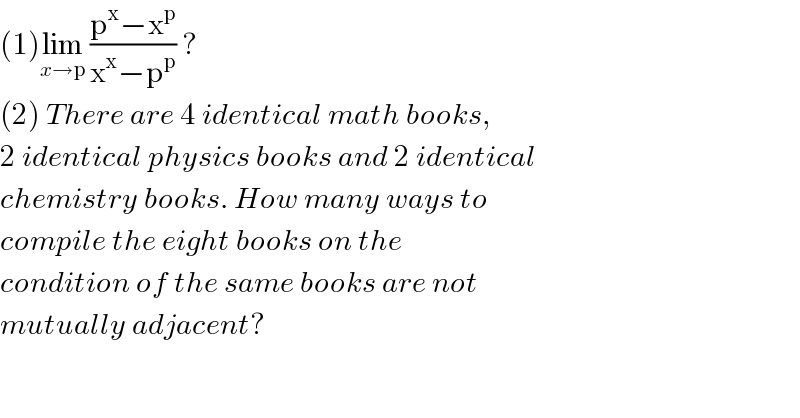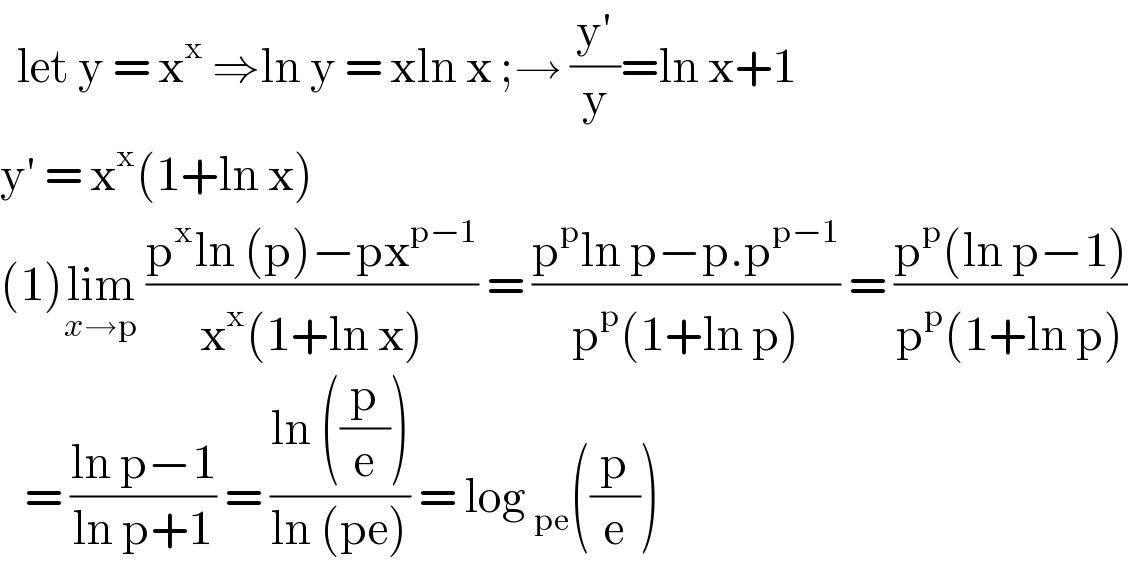
Question and Answers Forum
Question Number 112455 by john santu last updated on 08/Sep/20

Answered by bobhans last updated on 08/Sep/20

Answered by mr W last updated on 08/Sep/20

| ||
Question and Answers Forum | ||
Question Number 112455 by john santu last updated on 08/Sep/20 | ||
 | ||
Answered by bobhans last updated on 08/Sep/20 | ||
 | ||
| ||
Answered by mr W last updated on 08/Sep/20 | ||
 | ||
| ||